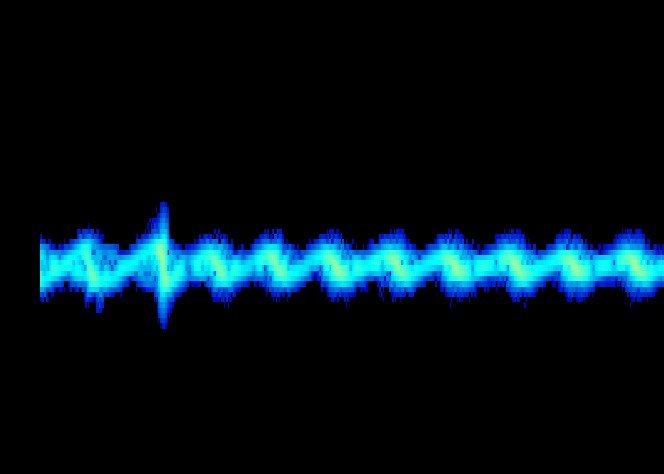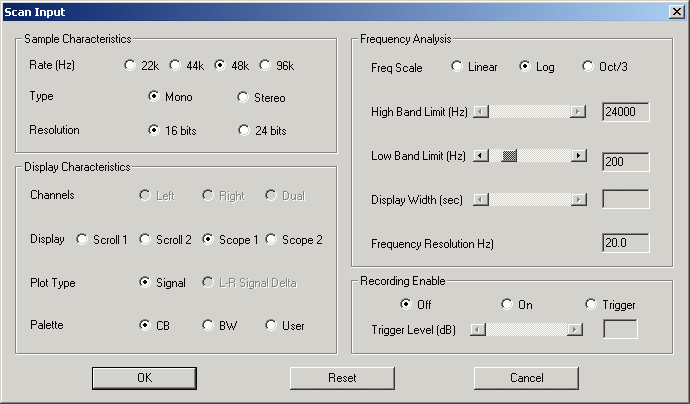General information
This activity is not critical to the Invent and Alien activity, but I think it's interesting for the students and does go into a little more detail on how we can actually find exoplanets.
This description assumes you already are familiar with audio spectrums, spectrograms, the basics of sound, etc.
As such I'm only describing my setup, not how to explain it to the students, etc. I wish I could point to a good source for learning the details from but as my work has involved to the underlying concepts for the past 20+ years I'm afraid I'm hard pressed to think of a good source other than starting in Wikipedia and follow the links out from there. http://en.wikipedia.org/wiki/Spectrogram and http://en.wikipedia.org/wiki/Musical_Acoustics
Building the sound source
The picture below illustrates how I put together the beeper. Everything is taped or hot melted to a short loop of nylon rope. I then have a longer price of rope with a dog clip on the end to clip onto this; this allows using the beeper without a long rope attached.
If for some reason this came apart when you were using it the battery would hurt. A small piece of foam or bubble wrap should go around it on the off chance you slip or Murphy otherwise intrudes on your day. (and yes, I've whacked a number of things with it)
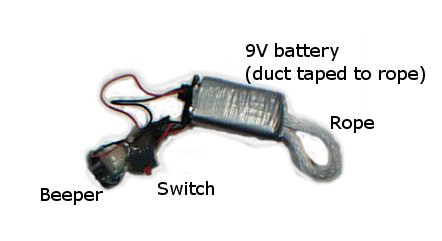
The duct tape works pretty well as you can cut it off if you need to change the battery. With typical use the battery will drain itself versus you actually running it down.
General plan
After the police siren example from the power point I fire up the Spectrogram software. I first just run it in FFT mode, and pick a student to do some whistling, first some low notes, then high, then up and down so they get an idea of the "visual" connection between the sounds.
Here's the settings I used; I increase the lowest frequency to 200 Hz as there's not much below that and it just distracts from things. Note I use a LOG scale for this part as IMHO it looks better.
Here's a typical screen shot:
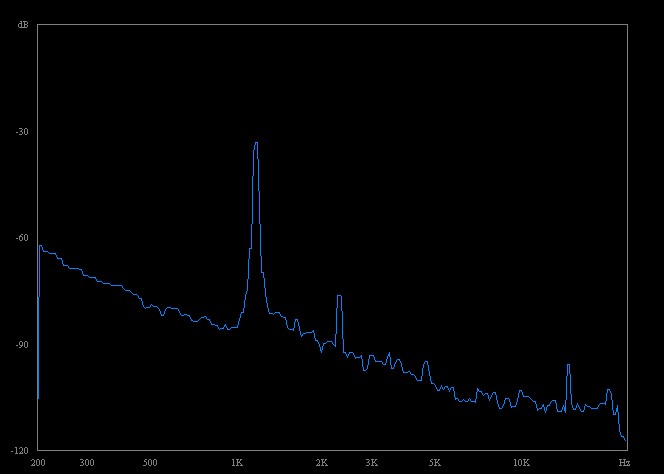
Once they've played a bit I turn on the beeper so they can see that. Then I switch to a spectrogram mode. Initially with the frequency range about 200 Hz at the low end. Later with the beeper we'll zoom in (linear scale) to just around its center frequency to better see the effect. (with this particular piece of software you can't save settings easily so you should make notes about what to change each time).
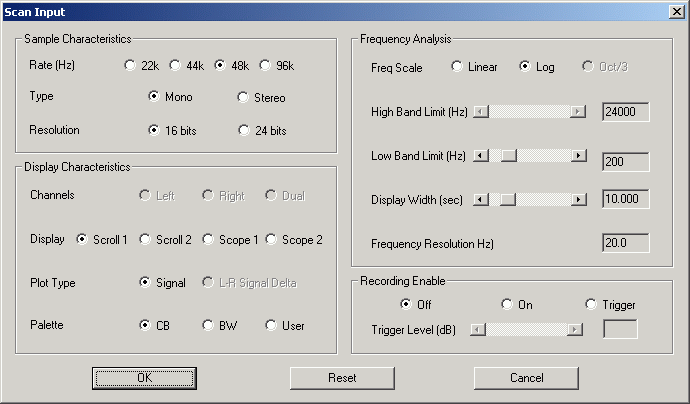
Example spectrogram (log scale) of whistling,
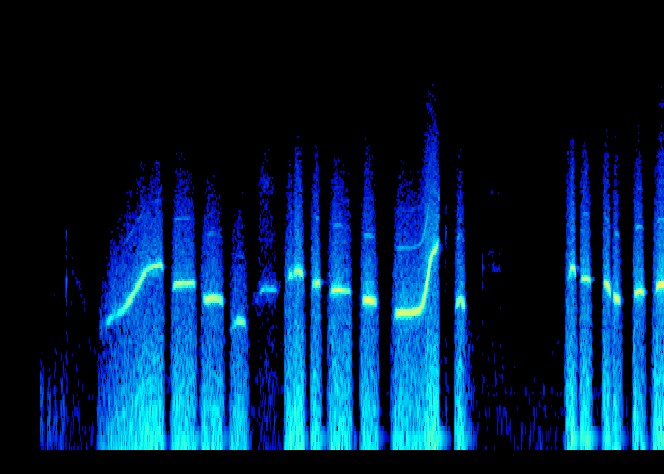
Here's the setup for the showing the doppler effect by swinging the beeper in front of the microphone (in this case like a pendulum)
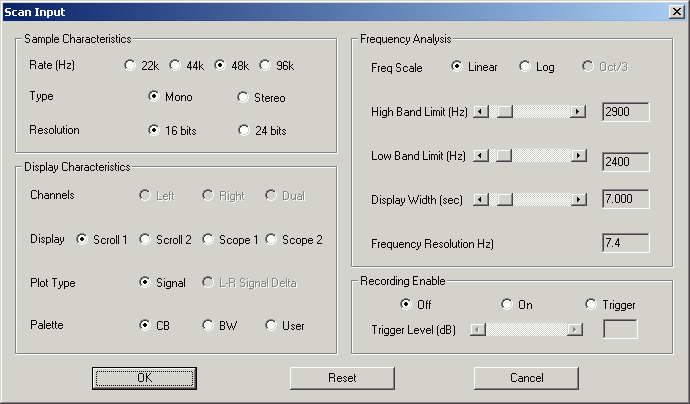
And the results
